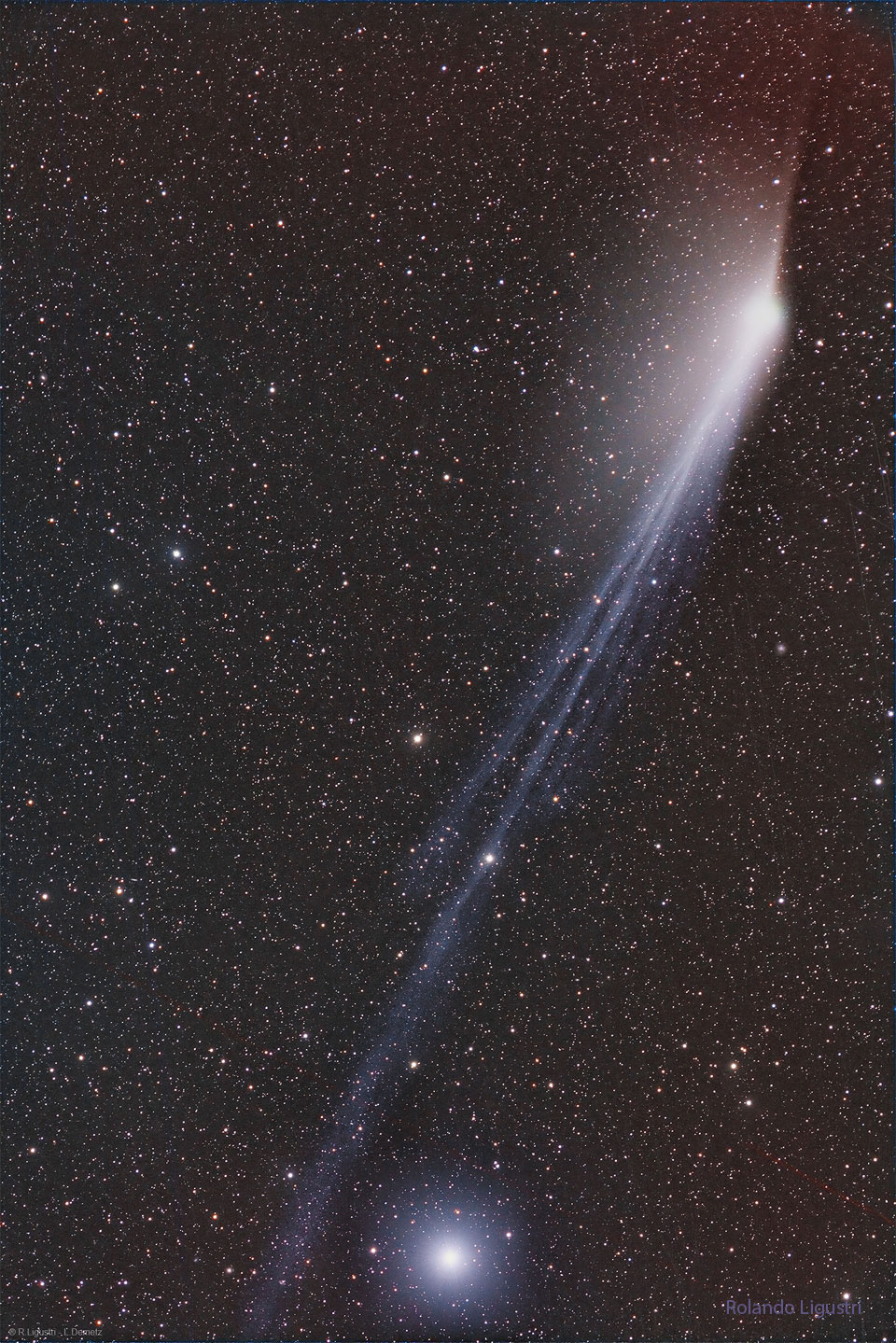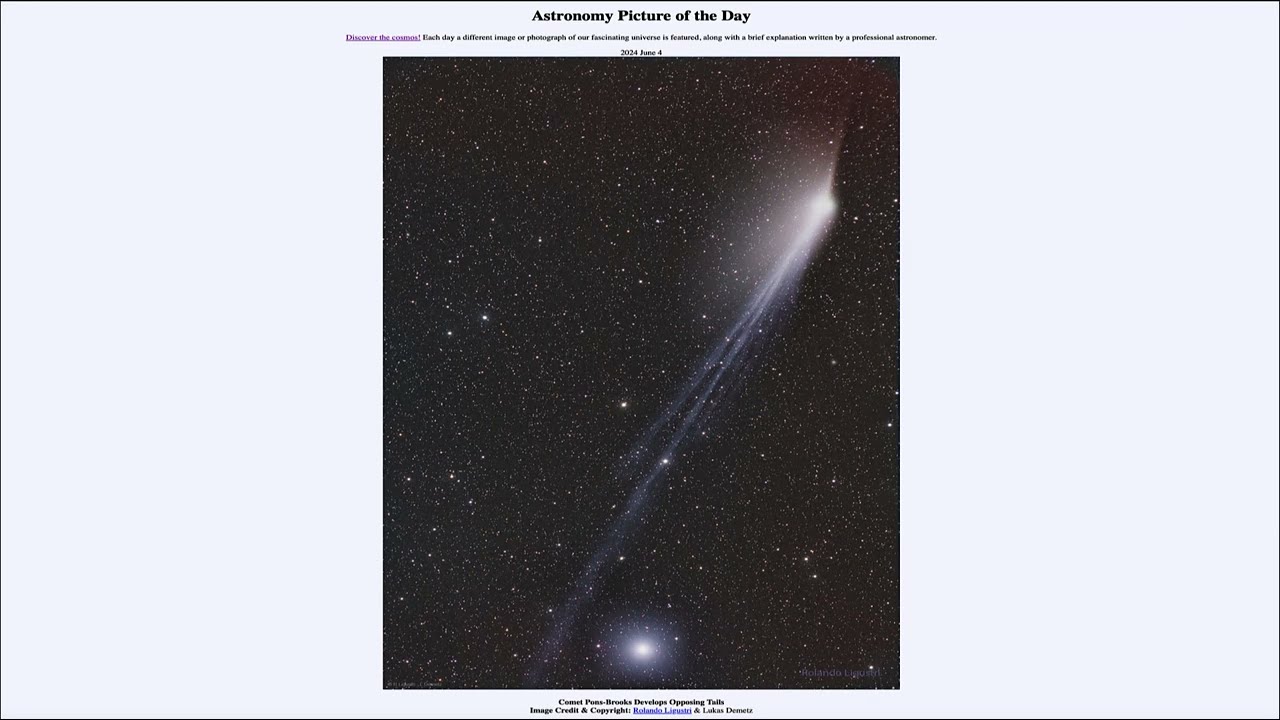
Explanation:
Why does
Comet Pons-Brooks
now have tails pointing in opposite directions?
The most
spectacular tail is the blue-glowing
ion tail that is visible flowing down the image.
The ion tail is
pushed directly out from the Sun by the
solar wind.
On the upper right is the glowing central coma of
Comet 12P/Pons–Brooks.
Fanning out from the
coma,
mostly to the left, is the comet’s
dust tail.
Pushed out and slowed down by the
pressure of sunlight,
the dust tail tends to trail the comet along its orbit and, from
some viewing angles, can appear
opposite to the ion tail.
The distant, bright star
Alpha Leporis
is seen at the bottom of the
featured image captured last week from
Namibia.
Two days ago, the comet passed its closest to the
Earth
and is now best visible from southern skies as it dims and
glides back to the outer
Solar System.
Source: https://apod.nasa.gov/apod/ap240604.html
